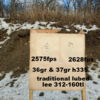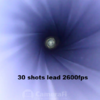Casull
Member
- Joined
- Jan 12, 2020
- Messages
- 97
Can anyone help clear up this mess. My goal is 300 grain 454 casull @38,000 psi. The mud starts with the lee bhn tester saying for 35,000 psi i need a bhn of 27 but the lyman casting handbook says to use #2 alloy and thats a bhn of 15? Is it be possible to shoot a 15 bhn bullet at 38,000 psi even with a gas check. 15 to 27 is a huge difference when talking 38,000 psi.
Question 2: i hear that i dont want to use anymore then 6% antimony because that would make the alloy to brittle BUT the lyman 50th addition says to use linotype and that has 12% antimony? STOP CONFUSING the newbs! Damn BOOKS
Question 2: i hear that i dont want to use anymore then 6% antimony because that would make the alloy to brittle BUT the lyman 50th addition says to use linotype and that has 12% antimony? STOP CONFUSING the newbs! Damn BOOKS













